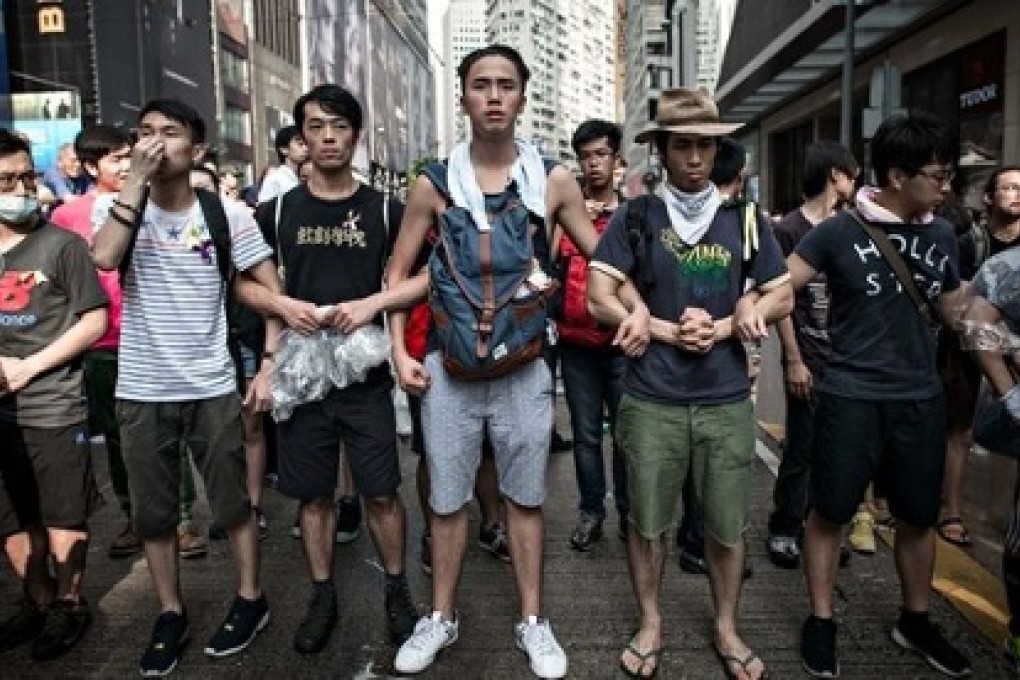
Tear gas and pepper spray are so last week.
On Friday, thugs fanned out at protest sites across the city, starting with Mongkok and quickly spreading to Tsim Sha Tsui and Causeway Bay. By nightfall, angry mobs disguised as “pro-Hong Kong citizens” had moved into Admiralty, the heart of the students-led pro-democracy movement.
I had arrived in Admiralty earlier the evening to offer protesters free help with their homework on the street. I was explaining the stories of Rosa Parks and Martin Luther King, Jr. to two university freshmen, when my phone started to buzz with text messages. “The Triads are heading your way. Stay Safe!” a reporter friend warned. “Leave Admiralty NOW, and remove any yellow ribbons on you,” said another. The yellow ribbon has been an insignia for the movement, as is the yellow umbrella that is now known around the world. Pro-Beijing groups have responded with a symbol of their own: a blue ribbon to call on law enforcement to end the political standoff. Many of the thugs in Mongkok were seen wearing the blue ribbon.
I didn’t pay much attention to my friends’ warnings. They weren’t anything new – rumours about Beijing mobilising Triad members to harass protesters had been circulating on social media for days. With so many false alarms going off this week, we had learned to take things with a heap of salt. That said, fighting crowds with crowds is nothing new. Rent-a-mobs are routinely deployed in unrests in Thailand and the Philippines. They are a weapon of choice not only because links to the renter are hard to prove, but also because they give authorities a convenient excuse to use force. A clash between yellow and blue ribbons would certainly be the justification that Hong Kong police had been waiting for to end the week-long impasse.
A few minutes later, my sidewalk classroom was interrupted yet again, this time by speeches broadcasted from a makeshift podium fifty metres away. The speaker was Joshua Wong (黃之鋒), founder of the activist group Scholarism (學民思潮) and one of the leaders of the students’ protest. He was confirming reports that throngs of angry blue ribbons had overrun Mongkok and Causeway Bay. Then came a series of emotional accounts from students who had been kicked and punched by mobsters earlier that evening. One girl, still sobbing, recounted her experience of being groped in the chest and up the legs. Horrified, I took out my phone and searched for corroborating news reports on the internet. On the subject of sexual assault, one man was heard taunting a teenage girl: “You should expect molestation in a street protest!”
I told my “students” to go home and continued scrolling through the news feed on my phone. The situation had deteriorated rapidly in the last several hours. Amateur videos of physical and sexual assault abounded, many of them were too gruesome to watch. The attacks were systematic and indiscriminate: students, journalists and even passers-by. Much of the public outrage was also directed at the police’s flagrant inaction. Some uniformed officers were seen standing idly by with their arms folded, while others took advantage of the mayhem to remove barricades set up by students. Worse, there were video clips showing police officers arresting assailants on the spot, only to release them quietly on the other end of the street.
